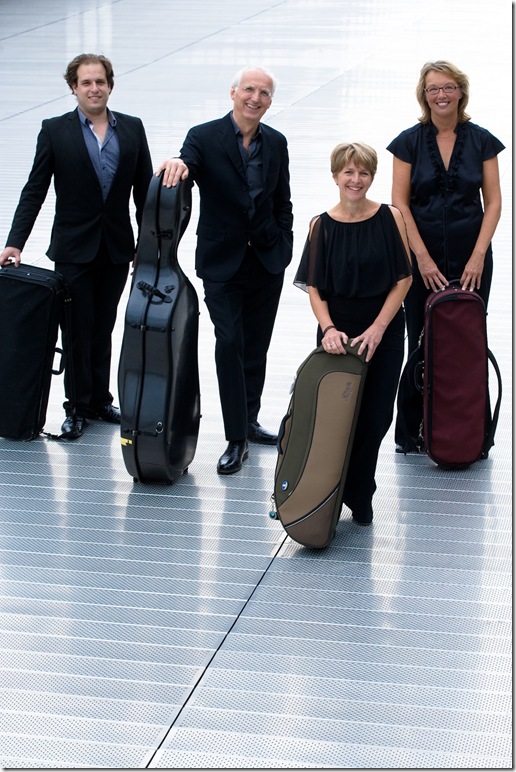The city of Utrecht in Holland has a music conservatory that draws unto it teachers of high caliber. Students from all over the world cross its portals. Only two of the members of this version of the Utrecht String Quartet studied there, but they honor the school by taking its name.
Renowned for searching for forgotten repertoire, the Utrecht opened the program at the Flagler Museum on Tuesday with Dutch composer Johannes Verhulst’s String Quartet No. 1 (in D minor). It’s a lovely, lyrical work, inspired by Mendelssohn and dedicated to him by the composer. At age 20, Verhulst (1816-1891) met Mendelssohn when the latter spent a summer in The Hague. Lessons followed with the master in Leipzig. Schumann became his friend also and praised his work in print.
As played by the Utrecht, it is a light, melodious piece with lively tunes, none of which stay in the mind on first hearing. The Allegro non troppo has a fine development owing much to Mendelssohn, ending with two gently plucked chords by all four players. Second, the Adagio, opens with four strident chords. Sing-song tunes and deep harmonies with reverse scales follow from the cello and viola. The strident beginning returns but the song-like melodies return to great effect. Schumann said of this movement that “it tells more than any other form, the inner life of this composer.”
The Scherzo is lively stuff, with echoes of Mendelssohn’s incidental music for Shakespeare’s Midsummer Night’s Dream. A sharp attack leads to some hard work by the two violinists in the Presto as they wind around a strong threnody with constant trills and brilliant runs before an earnest rallentando brings the piece to an end.
Mendelssohn’s Four Pieces for String Quartet (Op. 81), was next. Again, a rarely heard work, made up of music composed at different times. The first two pieces, Andante and Scherzo, began as movements for an unfinished string quartet. The third and fourth pieces, Capriccio and Fugue, were played as one movement.
In contrast to the Verhulst quartet, it is evident this is the work of a master. It has powerful complex statements with lovely passages dedicated to the cello in the Andante. Rhythmical triplets and a plethora of 16th notes by the violins lead to sonorous melodies full of passion. There was some ragged playing here in the thick of all this animation, which was surprising from so fine a group of artists.
The Capriccio and Fugue were heavy and hard-driving, no doubt echoing the composer’s grief over the recent loss of his sister, Fanny. From my point of view, this pastiche (which Mendelssohn did not assemble himself) does not really exemplify a genre in which he excelled: string quartets.
Brahms’s Quartet No. 1 (in C minor, Op. 51, No. 1), ended the program. It is unmistakably Brahmsian in its clever harmonic progressions and so like his symphonies, with point and counterpoint. The Utrecht approached it with fresh playing. The rhapsodic melodies appeared second nature in their bowing. It was a fine interpretation, almost dreamlike at times in its delivery, especially the Austrian dance themes.
A wakeup call screeches out in the last movement. Questing, reaching and searching for an end with unsettled quotations, typical of Brahms, moves the work steadily to a brilliant resolve. Warm applause greeted the Utrecht, which gave two encores: Tchaikovsky’s Sweet Dreams (Op. 39, No. 21) arranged by Borodin, and a fast Russian dance lasting all of 30 seconds.
The next concert in the Flagler series features the Schubert Ensemble of Great Britain, which plans music by Mahler (his one-movement student Piano Quartet), Mozart (Quartet No. 1 in G minor, K. 478), and the popular Piano Quartet (in E-flat, Op. 47) of Schumann. The concert is set for 7:30 p.m. Tuesday, Feb. 5, at the Flagler Museum on Palm Beach. Tickets: $60, includes champagne reception afterward. Call (561) 655-2833 or visit www.flaglermuseum.us.
